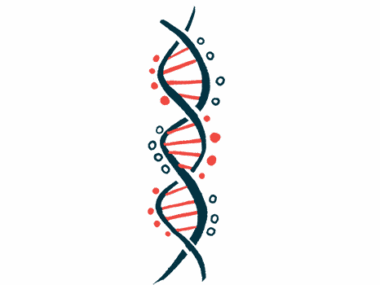Mutant huntingtin protein pokes holes in cells’ nuclear membrane
This could lead to loss of protective functions, promote nerve cell damage
Written by |

Clumps of the mutant huntingtin protein, which are the known cause of Huntington’s disease, poke holes in the membrane that surrounds and protects cells’ DNA-filled nucleus, according to preclinical research.
These protein aggregates had tiny, protruding fibers that damaged the membrane, which is called the nuclear envelope. Lab-grown cells with mutant huntingtin in the nucleus showed an impaired ability to repair this damage. Altogether, this could lead to a loss of the envelope’s protective functions over the long term, contributing to nerve cell damage.
“We have discovered that the aggregates associated with Huntington’s disease induce ruptures in the nuclear envelope that compromise its barrier function,” Lukas Kapitein, PhD, the study’s senior author and a professor at Utrecht University in the Netherlands, said in a press release.
The findings were described in the study “Nuclear poly-glutamine aggregates rupture the nuclear envelope and hinder its repair,” which was published in the Journal of Cell Biology.
In Huntington’s, mutations in the HTT gene give rise to an abnormal version of huntingtin that’s prone to clump up and accumulate inside nerve cells, leading to their death.
The mechanisms by which mutant huntingtin leads to neurodegeneration aren’t fully understood, but multiple cellular factors are likely at play. The mutant protein has been associated with problems in protein quality control and research indicates it can interact with the nuclear envelope, which may be disrupted in Huntington’s. The nuclear envelope serves as a barrier to protect the contents of a cell’s nucleus, where most of the DNA is found. When the nuclear envelope is impaired and doesn’t form a tight enough barrier, DNA can be damaged and normal cellular function impaired.
Effects of mutant huntingtin protein on cells’ nuclear membrane
Here, the researchers explored whether mutant huntingtin affected the integrity of the nuclear envelope using lab-grown human cells engineered to produce the mutant huntingtin so it was immediately transported to the nucleus and remained there.
Live-imaging of the cells showed that clumps of mutant huntingtin formed only in the nucleus, and the cells frequently showed a substantial loss of nuclear envelope integrity, with signs of repeated breaks, or ruptures, in the membrane. Before breaking, it often showed signs of abnormal blebbing, or bulging.
Additional experiments indicated mutant huntingtin clumps in the nucleus disrupt the protein network that serves to strengthen the nuclear envelope, essentially destabilizing the membrane and making it more likely to rupture.
A special type of microscopy revealed the protein aggregates had tiny fibers that stuck out and could poke holes in the membrane.
Altogether, “these findings demonstrate that nuclear [mutant huntingtin] aggregates induce NE [nuclear envelope] blebbing and rupture, reflecting a compromised barrier function of the NE,” the researchers wrote.
Can the damage be repaired?
This type of damage to the envelope could be quickly repaired normally. However, cells with nuclear huntingtin aggregates recovered less often and more slowly than healthy cells or cells where mutant huntingtin only accumulated outside the nucleus.
Proteins normally involved in repair processes were found to accumulate at the rupture sites, further supporting the idea of impaired envelope repair.
While most of the experiments were conducted in lab-grown human cells similar to epithelial cells, like those that cover the skin, the scientists also found similar disruptions to the nuclear envelope in lab-grown rat nerve cells producing mutant huntingtin.
Researchers believe mutant huntingtin-induced damage to the nuclear envelope — and its inability to recover — may leave nerve cells’ DNA vulnerable to damage, affecting the activity of genes important for nerve cell health and function.
The scientists think similar mechanisms could be at play with other neurodegenerative diseases such as amyotrophic lateral sclerosis, or ALS, where different types of toxic protein aggregates accumulate.
“We speculate that nuclear aggregate-induced ruptures in the nuclear envelope represent a common contributor to neurodegeneration that initiates a cascade of deregulated processes culminating in neuronal death and neuroinflammation,” Kapitein said.






